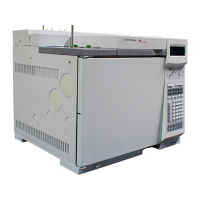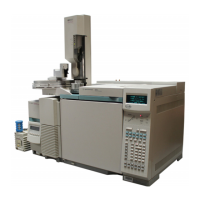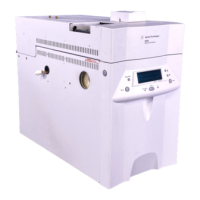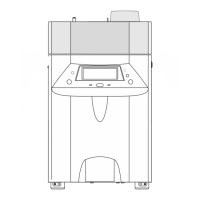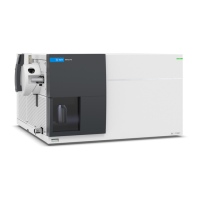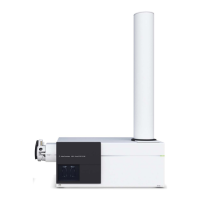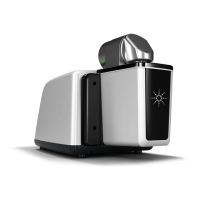350 Flame Photometric Detector (FPD)
Diagnostics
32 of 36
Jun 2001
Detectors
Agilent 6890 Gas Chromatograph Service Manual
Diagnostics
Quenching effects
Hydrocarbon quenching occurs when a high concentration of carbon dioxide
from a hydrocarbon peak is in the flame at the same time as the sulfur species.
Part of the light emitted by the sulfur species is absorbed by some CO
2
species.
Self-quenching occurs at high concentrations of the heteroatom species. Some
other ground state (inactivated) species reabsorbs the emitted photon,
preventing it from reaching the PMT.
These effects are reduced by good chromatographic practices. The column
should provide good separation of the compounds, those that contain sulfur
or phosphorus as well as those that do not but may absorb light. A careful,
multilevel calibration is well worth the investment!
Detector and gas cleanliness must be maintained to have consistent
responses. Since most sulfur and phosphorus compounds contain chemically
active sites, the injection and column systems must be kept very clean.
PMT saturation
The photomultiplier tube may saturate if light intensity is too high. When this
happens, increasing concentration produces little or no increase in signal and
peak tops are rounded or flattened. The sample must be diluted to prevent
saturation.
Detector temperature considerations
The FPD flame produces considerable water vapor. The detector must be
operated above 120°C to prevent condensation.
Unnecessarily high temperatures can cause thermal decomposition of many
thermally labile phosphorus and sulfur compounds.
Detector temperature can have a significant effect on sulfur sensitivity. If
analyzing compounds with high boiling points, the detector temperature
should be set to 25°C above the final oven temperature—if allowed by the
temperature limit of 250°C.

